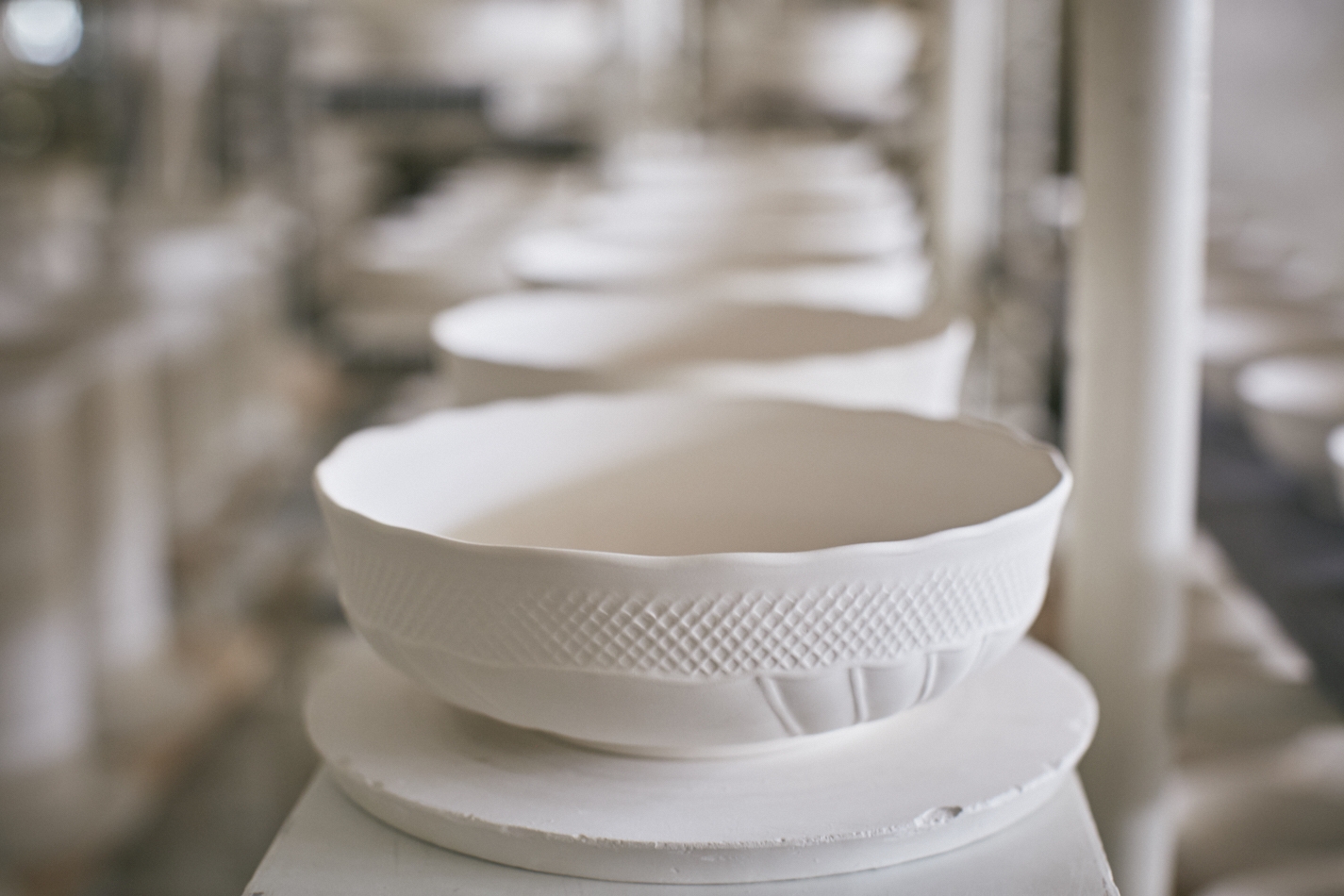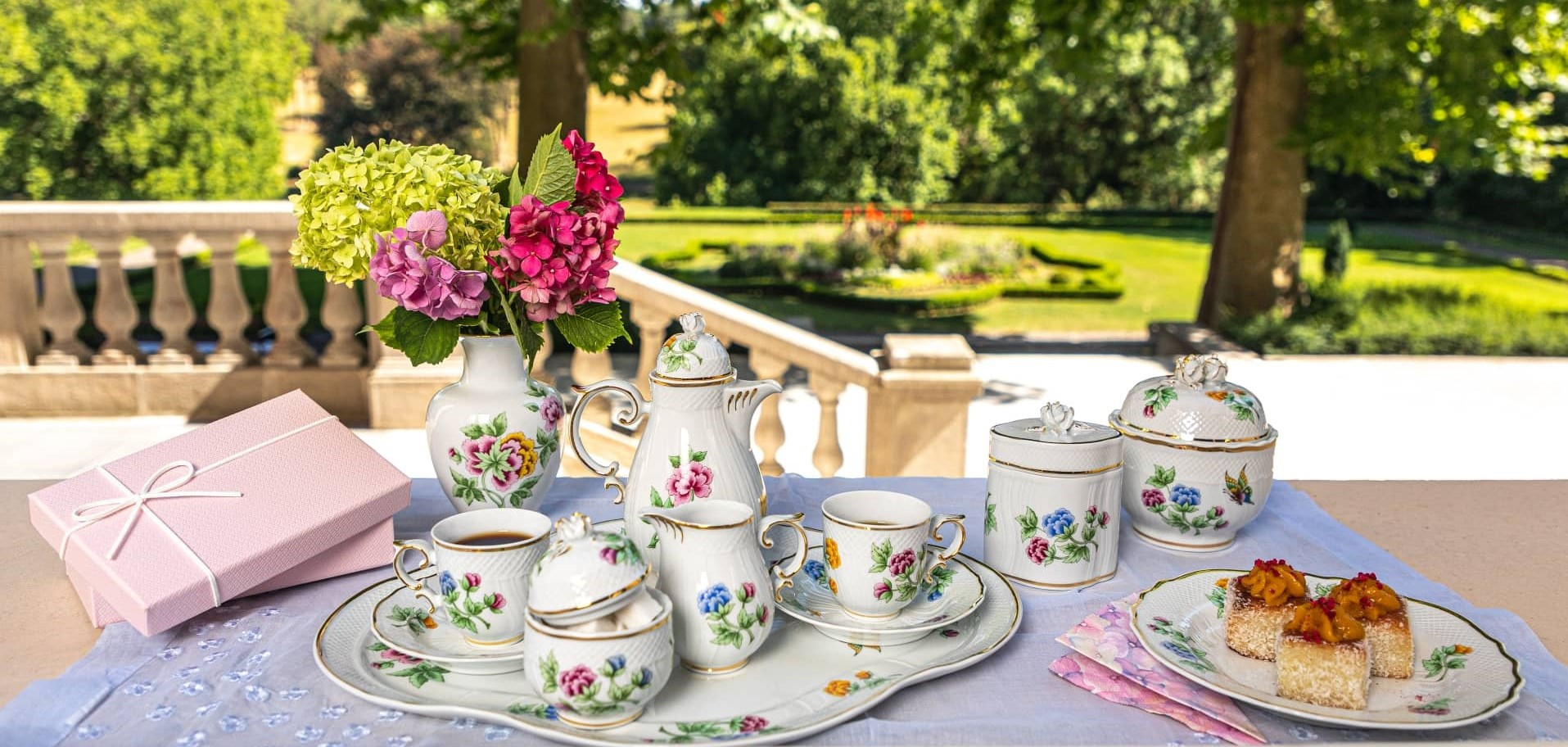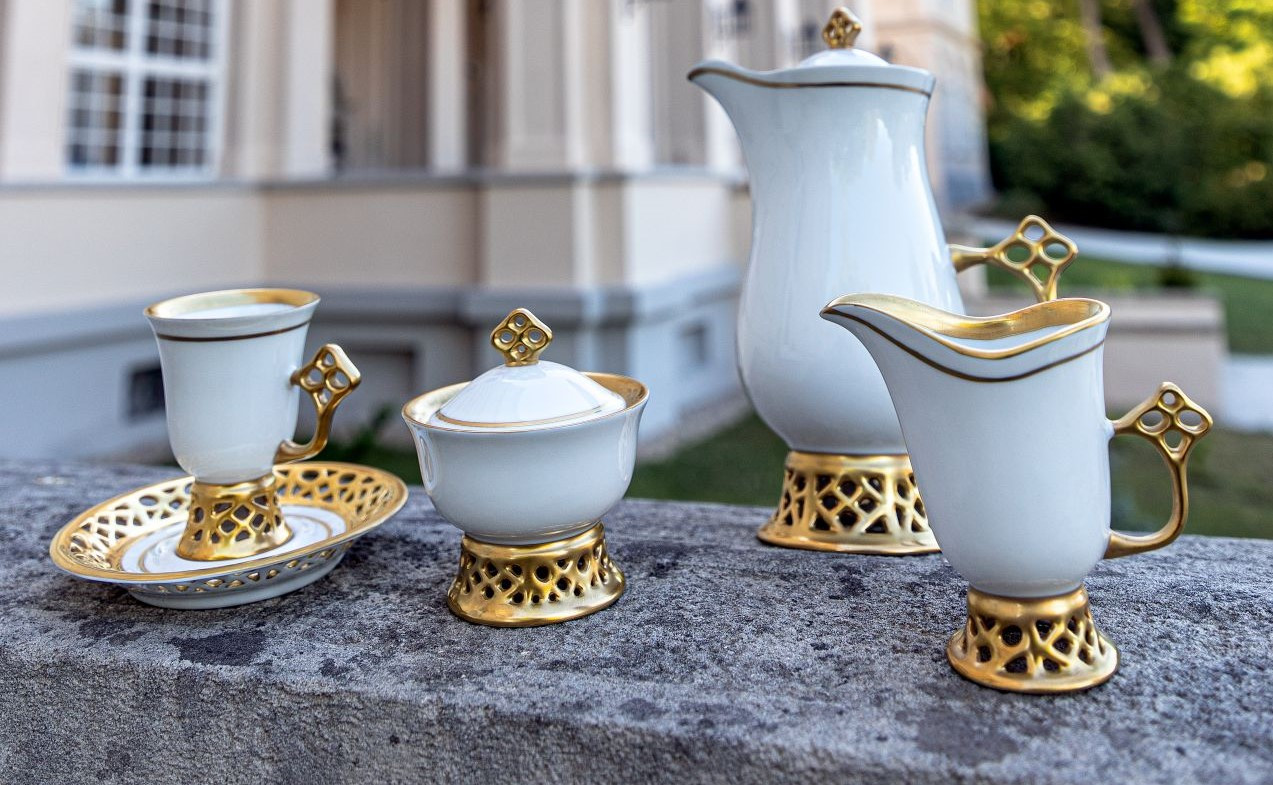
A millennia-old technology, yet few people are familiar with it. In our mechanized world, the greatest value of porcelain is craftsmanship. The visions and stories born of human imagination, the shapes and patterns created by skilled hands, and the love instilled by the soul are what cannot be replaced by anything, and what makes Hollóháza porcelain unique and eternal.
.jpg)
Take a look behind the scenes and get to know the process of porcelain making, how genuine masterpieces are created from a few ingredients through the work of careful hands.
It all starts with our industrial and visual artists conceiving the shapes, patterns and colours. The next step is designing the collections, and only then does the creation of the porcelain begin. The traditional work process takes several weeks or even months, and each majestic piece is handled hundreds of times before we can say that the piece is finished.
Porcelain is nature itself, as it consists exclusively of natural ingredients: a mixture of ground minerals – kaolin, quartz, feldspar – and water. Among these, one of the most important components is kaolin, which is also called white clay.
First, we mix the four raw materials and make a paste out of them in two different densities, depending on the shape we want to create. The first type requires the dense, plasticine-like raw material to be pressed into large disk shapes in order for them to contain as little moisture and air as possible. Plates, for example, are made from these by with the help of a potter’s wheel or slip casting. In this case we press the paste onto a plaster mould. The thinner, more liquid version is also poured into a plaster mould, which is how cups, jugs or vases are made. More complex shapes, such as figurines, are usually made up of several pieces, or we can also mention the classic porcelain rose, each petal of which is individually hand-built to form a stunning flower in the end.

After shaping, polishing and cleaning, the porcelain rests and dries in order to avoid subsequent cracks or deformation. Then comes one of the most important stages of porcelain making, firing, which takes place three times. During the first firing, also called as biscuit firing, the porcelain loses its remaining moisture, so the shape shrinks by approximately 15%.

After this step, the porcelain receives its wonderfully shiny, glazed surface. Glazing takes place in a large tub, where the objects are practically “bathed” in the liquid glaze, which is followed by the next firing. The porcelain takes its final shape during the glaze firing, but at that time it is still “only” snow-white.

And now we come to perhaps the most special stage of porcelain manufacture, the decoration. In the decorating workshop, inhabited by special paints, special pens and hair-thin brushes, almost total silence reigns. To this day, our craftspeople draw the designs on the porcelain and colour them by hand, and they also glue on pre-made decorations manually. The most minute motifs, lines and gradient colours are impressed by a sure hand and with the utmost care in order to render the end product nothing but perfect. Our most characteristics colours are green, cobalt blue and gold – made of genuine gold, of course.
From here, only one last step remains, the decorative firing, which makes the porcelain attain its final form.
This is how Hollóháza porcelain is made these days – by hand, with soul, in the traditional way.















